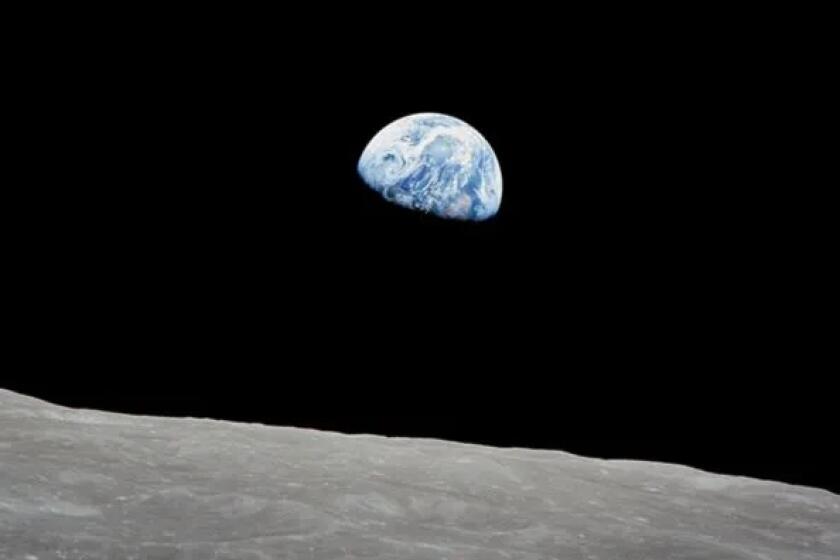Earth’s inner core isn’t just slowing, it’s also shape-shifting, study finds

- Share via
USC scientists have made a groundbreaking discovery about the nature of the Earth’s enigmatic inner core, revealing for the first time that this 1,500-mile-wide ball of iron and nickel is changing.
The planet’s inner core was previously thought of as a hard, solid sphere. But a new study has found that its edges are softer than realized and actually changing shape as they press against the liquid iron and nickel in Earth’s outer core.
“The molten outer core is widely known to be turbulent, but its turbulence had not been observed to disrupt its neighbor the inner core on a human timescale,” said USC Earth Sciences professor John Vidale, who led the study. “What we’re observing in this study for the first time is likely the outer core disturbing the inner core.”
An asteroid could hit Earth, but scientists are continuing to gather data to understand its trajectory and potential impact to Earth.
Vidale said it’s likely the outer core is deforming the shape of the inner core, pushing it a kilometer or two in areas where they rub together with force. These findings were published Monday in a study conducted alongside researchers from the University of Chinese Academy of Sciences, Cornell University and the University of Utah.
When his team members embarked on their research, they did not expect to document structural changes to the Earth’s inner core. Instead,they were focused on learning more about the slowing of its rotation.
Previous research has found that the rotation of the inner core is slowing down relative to the rotation of the external crust, which may cause minute changes in Earth’s rotation and subtly affect the length of a day. Although these time changes are only estimated to be a matter of milliseconds a year, they can accumulate over eons.
Vidale said he was busy studying graphs that record ground vibrations caused by seismic waves when one data set “curiously stood out from the rest.”
“Later on, I’d realize I was staring at evidence the inner core is not solid,” he added.
His team was studying seismic data from 121 repeating earthquakes at 42 locations near Antarctica’s South Sandwich Islands that occurred between 1991 and 2024.
Repeating earthquakes are quakes with the same magnitude and location. If a pair of repeating earthquakes happen while the Earth’s inner core is at the same location in its rotation, scientists would assume that the seismic data recorded would be the same in both earthquakes.
A USC professor has confirmed what many scientists already believed: Rotation of the solid iron ball at Earth’s center is slowing.
However, the curious data set that Vidale came across defied this logic, prompting his team to realize that the differences they observed were likely caused by changes in the shape of the inner core.
“We see these subtle differences,” he said. “And if they’re not [caused by] the inner core turning, the most likely possibility is there’s some deformation in the soft outermost inner core.”
The scientific implications of this revelation are not yet clear, but Vidale hopes it can help researchers untangle further mysteries related to the inner core and lead to better understanding of Earth’s thermal and magnetic fields.
“We hope it has broader implications,” he said. “The reason we do this is we like to solve riddles, and the stranger and harder the riddle that we can solve, the happier we are.”
More to Read
Sign up for Essential California
The most important California stories and recommendations in your inbox every morning.
You may occasionally receive promotional content from the Los Angeles Times.













